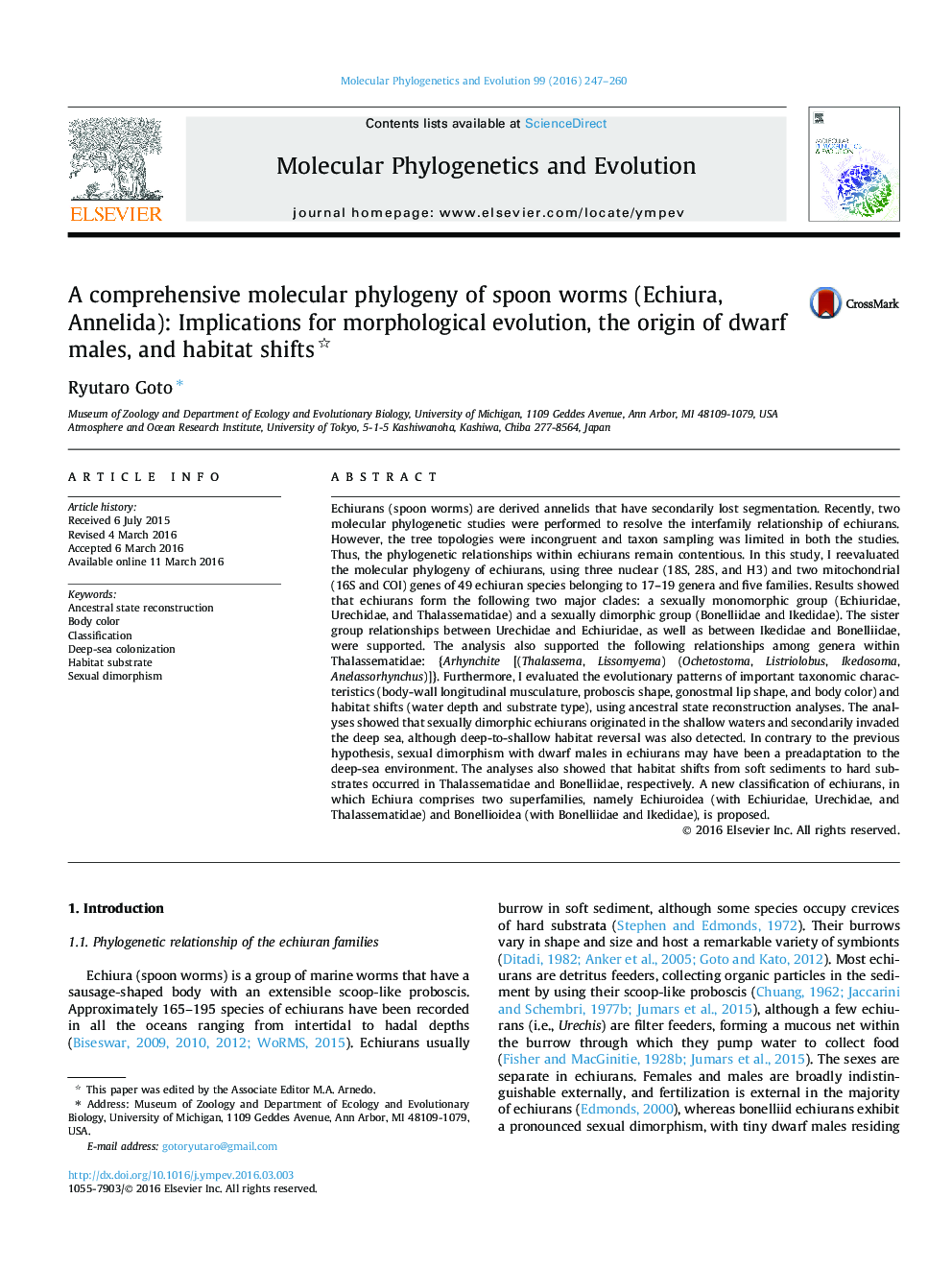| Article ID | Journal | Published Year | Pages | File Type |
|---|---|---|---|---|
| 5918532 | Molecular Phylogenetics and Evolution | 2016 | 14 Pages |
â¢Comprehensive molecular phylogeny of spoon worms (Echiura, Annelida).â¢Echiurans are separated into sexually monomorphic and sexually dimorphic groups.â¢Dwarf males in sexually dimorphic echiurans may have evolved in shallow waters.â¢Habitat shifts from soft sediment to hard substrate occurred in Thalassematidae and Bonelliidae, respectively.â¢A new echiuran classification is proposed based on molecular phylogenetic analyses.
Echiurans (spoon worms) are derived annelids that have secondarily lost segmentation. Recently, two molecular phylogenetic studies were performed to resolve the interfamily relationship of echiurans. However, the tree topologies were incongruent and taxon sampling was limited in both the studies. Thus, the phylogenetic relationships within echiurans remain contentious. In this study, I reevaluated the molecular phylogeny of echiurans, using three nuclear (18S, 28S, and H3) and two mitochondrial (16S and COI) genes of 49 echiuran species belonging to 17-19 genera and five families. Results showed that echiurans form the following two major clades: a sexually monomorphic group (Echiuridae, Urechidae, and Thalassematidae) and a sexually dimorphic group (Bonelliidae and Ikedidae). The sister group relationships between Urechidae and Echiuridae, as well as between Ikedidae and Bonelliidae, were supported. The analysis also supported the following relationships among genera within Thalassematidae: {Arhynchite [(Thalassema, Lissomyema) (Ochetostoma, Listriolobus, Ikedosoma, Anelassorhynchus)]}. Furthermore, I evaluated the evolutionary patterns of important taxonomic characteristics (body-wall longitudinal musculature, proboscis shape, gonostmal lip shape, and body color) and habitat shifts (water depth and substrate type), using ancestral state reconstruction analyses. The analyses showed that sexually dimorphic echiurans originated in the shallow waters and secondarily invaded the deep sea, although deep-to-shallow habitat reversal was also detected. In contrary to the previous hypothesis, sexual dimorphism with dwarf males in echiurans may have been a preadaptation to the deep-sea environment. The analyses also showed that habitat shifts from soft sediments to hard substrates occurred in Thalassematidae and Bonelliidae, respectively. A new classification of echiurans, in which Echiura comprises two superfamilies, namely Echiuroidea (with Echiuridae, Urechidae, and Thalassematidae) and Bonellioidea (with Bonelliidae and Ikedidae), is proposed.
Graphical abstractDownload high-res image (192KB)Download full-size image
